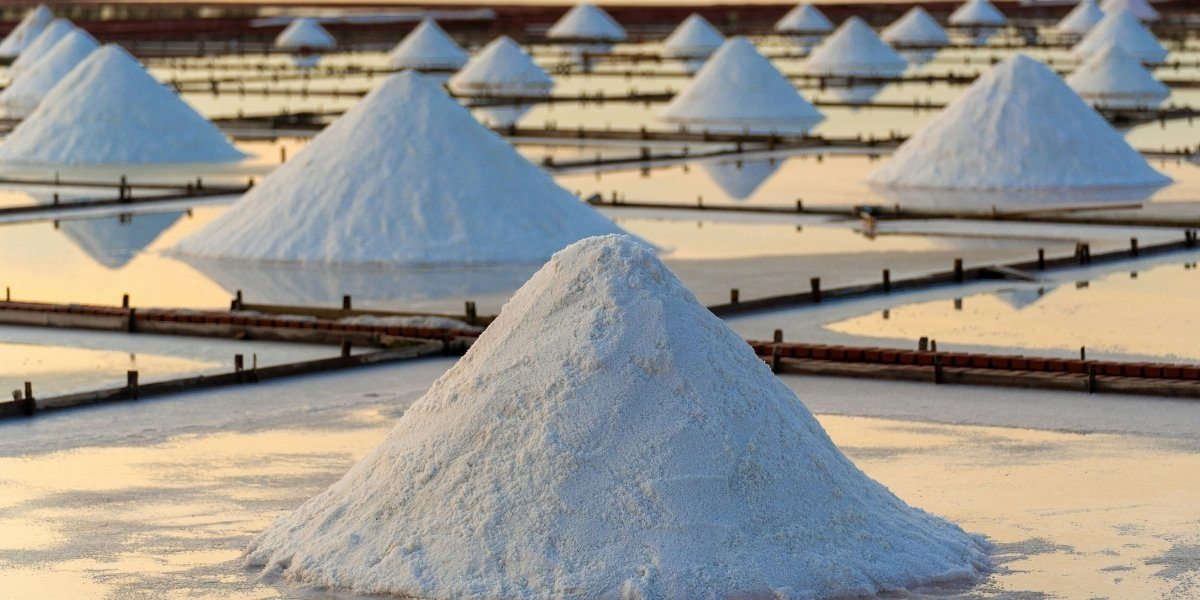What Are the Key Differences Between Himalayan Salt and Sea Salt?
When it comes to cooking and seasoning, Himalayan salt and sea salt have become increasingly popular choices in kitchens around the world. Both salts, though similar in many ways, have distinct characteristics that affect their culinary use and nutritional profiles.
Himalayan salt, often touted for its unique pink color, is mined from salt deposits in the Khewra Salt Mine in Pakistan, which is part of the Himalayan mountain range. This salt is believed to be a remnant of ancient seas that evaporated millions of years ago. Its color is derived from trace minerals like iron oxide, giving it its distinctive hue.
Sea salt, on the other hand, is produced by evaporating seawater. It can be harvested from oceans or saltwater lakes, with its flavor and mineral content varying depending on the body of water it comes from. While both salts come from natural sources, their mineral compositions and textures are shaped by the processes through which they are obtained.
The most apparent difference is in texture. Himalayan salt tends to have larger, coarse crystals that make it suitable for grinding or using as a decorative element in dishes. Sea salt, depending on its origin, is often finer and can be used for quick seasoning or sprinkled on food as a finishing touch.
Read Also: Why Sustainable Destinations Are the Future of Travel
Is There a Significant Nutritional Difference Between Himalayan Salt and Sea Salt?
One of the most common claims about Himalayan salt is that it is nutritionally superior to sea salt, due to its purported higher mineral content. However, the truth is a bit more nuanced.
Both Himalayan salt and sea salt contain similar amounts of sodium chloride, the main component responsible for their salty flavor. The main difference between the two is the trace minerals they contain. Himalayan salt is often marketed as having a higher concentration of minerals such as calcium, magnesium, potassium, and iron. However, these minerals are present in such small amounts that they are unlikely to have any meaningful impact on overall nutrition.
For instance, the mineral content in Himalayan salt does contribute to its distinctive color and flavor, but the levels of these minerals are so low that the nutritional difference between the two salts is minimal. In practical terms, you would need to consume large quantities of either salt to notice any significant nutritional benefit, which would be unrealistic given the small amounts typically used in cooking.
Therefore, while Himalayan salt may contain a slightly wider array of trace minerals, sea salt still provides much of the same health benefits, with the primary difference being taste and texture, rather than nutritional superiority.
What Are the Health Claims Surrounding Himalayan Salt and Sea Salt?
Both Himalayan salt and sea salt have been marketed as healthier alternatives to regular table salt, often with claims about their ability to balance electrolytes, promote hydration, and even detoxify the body. These claims, however, should be approached with skepticism.
For example, Himalayan salt is often marketed as being “free of additives” and “more natural” than regular salt, which may appeal to health-conscious consumers. However, table salt can also be free of additives when it’s sourced from the right manufacturers. The real difference lies in the anti-caking agents that are added to processed table salt, which are typically absent in both Himalayan and sea salts.
There are also claims that the trace minerals in Himalayan salt can help with everything from reducing muscle cramps to improving digestion. While it’s true that potassium and magnesium can help with muscle function, the small amounts present in Himalayan salt are insufficient to provide any meaningful health benefits. Similarly, the idea that Himalayan salt or sea salt can help detoxify the body is unfounded. The body’s natural processes—mainly through the liver and kidneys—are responsible for detoxification, not the consumption of salt.
In essence, while Himalayan salt and sea salt may offer small amounts of additional minerals, they should not be relied upon for significant health benefits. Moderation in salt consumption, regardless of the type, remains the key to good health.
How Do Himalayan Salt and Sea Salt Perform in Culinary Uses?
While the health claims may be exaggerated, the culinary applications of both Himalayan salt and sea salt are undeniably valuable. Each type of salt has unique properties that make it ideal for specific uses in cooking.
Himalayan salt, with its larger crystals, is often used as a finishing salt or a decorative element. Its bold flavor and appealing color make it popular in dishes where the salt itself can be showcased, such as on roasted meats or in salads. Some chefs even use large Himalayan salt blocks as grilling surfaces, where the salt imparts subtle flavors while also serving as a natural cooking tool.
Sea salt, particularly the coarser varieties, is often used as a garnish or a quick seasoning. Its finer textures make it perfect for sprinkling over foods just before serving, adding a crunch and burst of flavor. Sea salt is also commonly used in recipes that require rapid dissolving, such as brines and certain sauces.
One of the main distinctions between the two is the flavor. Himalayan salt tends to have a slightly milder, less intense flavor compared to the sharper saltiness of sea salt. This makes Himalayan salt ideal for enhancing the flavors of more delicate dishes, while sea salt provides a more pronounced salty kick for bolder, heartier recipes.
Ultimately, the choice between Himalayan salt and sea salt in cooking comes down to personal preference and the specific dish you are preparing.
Read Also: The Growing Issue of Obesity in America: Causes and Impact
Should You Choose Himalayan Salt or Sea Salt for Your Health and Cooking?
Choosing between Himalayan salt and sea salt depends on personal taste, culinary preferences, and an understanding of their similarities and differences. While both are natural salts with their own unique properties, neither one offers significant nutritional benefits over the other, and both should be consumed in moderation.
For those interested in flavor, texture, and presentation, Himalayan salt may be more appealing due to its distinctive pink color and milder taste. It works well as a garnish or finishing salt and is also versatile in cooking, especially when used in blocks for grilling or serving.
On the other hand, sea salt tends to be a more accessible and affordable option. Its finer crystals are perfect for seasoning, and it’s widely available in various varieties that offer different textures and flavor intensities. Sea salt can also be easily used in cooking, from soups to sauces, where the salt needs to dissolve quickly.
Both salts can play important roles in the kitchen, but the key to a healthy diet lies in moderating salt intake, regardless of the type. Rather than focusing on the health hype surrounding these luxury salts, it’s important to consider them as flavoring agents that can elevate dishes and enhance culinary experiences.








